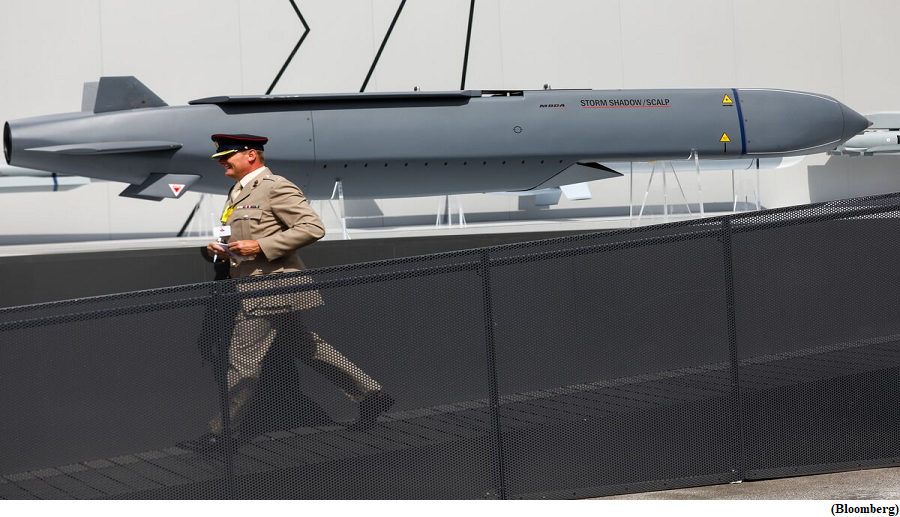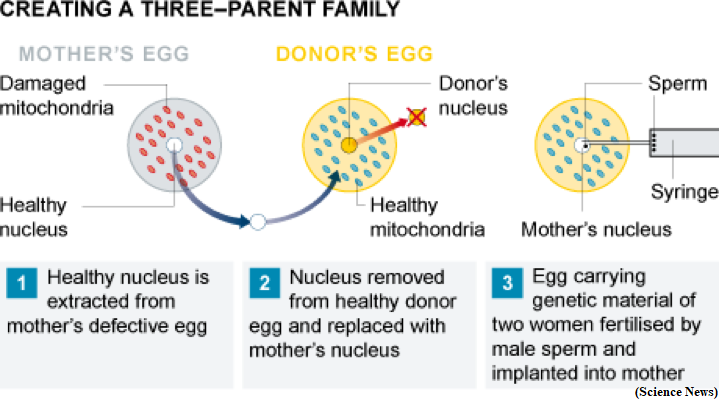UK to give long range Storm Shadow cruise missiles to Ukraine (GS Paper 3, Defence)

Why in news?
- The United Kingdom will provide long-range Storm Shadow cruise missiles to Ukraine, which it has been requesting in a bid to push back invading Russian forces.
Details:
- Ukraine has so far received a wide variety of weapons and ammunition, including anti-tank missiles, anti-aircraft systems and artillery, since Russia invaded it in February 2022.
- The Storm Shadow missiles, each costing around £2 million, will give Ukrainian forces the ability to strike Russian military targets located well behind the front lines; especially in Crimea, which Moscow illegally occupied in 2014.
What are the capabilities of long-range Storm Shadow cruise missiles?
- Storm Shadow is a long-ranged, air-launched, conventionally armed, deep-strike missile, which is manufactured by the France-based MBDA Missile Systems.
- It was first produced after the “UK Ministry of Defence (MoD) placed a €1.13bn contract with MBDA Systems for the development and production of the Storm Shadow long-range missile in 1997.
- France also commissioned MBDA to develop and manufacture Storm Shadow for its forces in 1997.
- With a range of more than 250 km, Storm Shadow weighs 1,300 kg and is 5.10m long.
Key features:
- It’s capable of being operated day and night in all weathers and designed to destroy high-valued stationary targets such as airbases, radar installations, communications hubs and port facilities.
- Storm Shadow, equipped with the fire and forget technology, also offers high precision deep strike capability as it features a sophisticated navigation system that includes inertial navigation (INS), global
- The missile features the BROACH (Bomb Royal Ordnance Augmented CHarge) warhead, a high-technology warhead, which first cuts the surface of the target, penetrates into it and then explodes.
Where has it been used?
- Storm Shadow is operated from Eurofighter Typhoon, Rafale, Mirage 2000 and Tornado.
- It is in service with the Royal Air Force, the French Air Force, the Italian Air Force and a number of export countries and has seen operational service in Iraq, Libya and Syria.
Allahabad HC allows carbon dating of Gyanvapi Shivling
(GS Paper 2, Judiciary)
Why in news?
- The Allahabad High Court recently ordered a “scientific survey”, including carbon dating, of a “Shivling” said to have been found at the Gyanvapi mosque complex in Varanasi after setting aside a lower court order on the issue.

Background:
- In May 2022, a court-ordered videographic survey of the Kashi Vishwanath temple-Gyanvapi mosque was completed by a Commission appointed by a local court.
- During the survey proceedings, a structure – claimed to be a “Shivling” by the Hindu side and a “fountain” by the Muslim side – was found inside the mosque premises.
- In their plea before the High Court, the Hindu petitioners had requested “to make scientific investigation by carbon dating or otherwise to determine the age, nature and other constituents of the Shivlingam.”
What is carbon dating?
- Carbon dating is a widely-used method to establish the age of organic materials, things that were once living. Living things have carbon in them in various forms.
- The dating method is based on the fact that Carbon-14 (C-14), an isotope of carbon with an atomic mass of 14, is radioactive, and decays at a well known rate.
- The most abundant isotope of carbon in the atmosphere is C-12. A very small amount of C-14 is also present. The ratio of C-12 to C-14 in the atmosphere is almost static, and is known.
- Plants get their carbon through photosynthesis; animals get it mainly through food. Because plants and animals get their carbon from the atmosphere, they too acquire C-12 and C-14 in roughly the same proportion as is available in the atmosphere.
- When they die, their interactions with the atmosphere stops. While C-12 is stable, the radioactive C-14 reduces to one half of itself in about 5,730 years, known as its ‘half-life’.
- The changing ratio of C-12 to C-14 in the remains of a plant or animal after it dies can be measured, and can be used to deduce the approximate time when the organism died.
But what about non-living things, like the purported Shivling in Varanasi?
- It cannot be used to determine the age of non-living things like rocks, for example.
- The age of things that are more than 40,000-50,000 years old cannot be arrived at through carbon dating. This is because after 8-10 cycles of half-lives, the amount of C-14 becomes almost very small and is almost undetectable.
- But there are other methods to calculate the age of inanimate things, many of which are based on the same principle as carbon dating. So, instead of carbon, decays of other radioactive elements that might be present in the material become the basis for the dating method. These are known as radiometric dating methods.
- Many of these involve elements with half-lives of billions of years, which enable scientists to reliably estimate the age of very old objects.
Methods for dating rocks:
- Two commonly employed methods for dating rocks are potassium-argon dating and uranium-thorium-lead dating. The radioactive isotope of potassium decays into argon, and their ratios can give a clue about the age of rocks.
- Uranium and thorium have several radioactive isotopes, and all of them decay into the stable lead atom. The ratios of these elements present in the material can be measured and used to make estimates about age.
- There are also methods to determine how long an object has remained exposed to sunlight. These apply different techniques, but are again based on radioactive decays and are particularly useful in studying buried objects or changes in topology.
- The most common of these is called cosmogenic nuclide dating, or CRN, and is regularly applied to study the age of ice cores in polar regions.
Indirect use:
- In some situations, carbon dating can be used indirectly as well. For example, a way in which the age of ice cores in glaciers and polar regions is determined by studying carbon dioxide molecules trapped inside large ice sheets.
- The trapped molecules have no interaction with the outside atmosphere, and are found in the same state as when they were trapped. Determining their age gives a rough estimate of the time when the ice sheets were formed.
- How long a rock has been at a particular place can also be determined similarly, organic materials like dead plants or insects trapped underneath can give an indication of when that rock reached that place.
So how does all of this fit into the Gyanvapi case?
- In the Gyanvapi case, the Hindu petitioners claim that the Gyanvapi mosque was built on an ancient Hindu temple.
- The purported “Shivling” is being cited by the Hindu cite as evidence for the existence of the temple. In this case, the petitioners’ purpose would likely be served if it was established that the “Shivling” existed at that place before the mosque came up in 1669.
- But there will be specific limitations. The structure cannot be uprooted or disrupted, as per orders of the Supreme Court, so methods like looking for trapped organic material beneath it might not be feasible.
Explaining mitochondrial donation treatment, how a baby has three parents
(GS Paper 3, Science and Technology)
Why in news?
- Recently, a baby was born using three persons’ DNA in the U. K.
- The baby, technically, has three parents, deriving the mitochondria from a donor apart from the genetic material (DNA) from biological parents. Pioneering technology was used to facilitate this, in order to prevent the child from inheriting the mother’s mitochondrial disease.
Why did the baby need ‘three parents’?
- The baby carried most of its DNA from its parents, and a minor per cent from the donor, whose mitochondria has been used while fertilising the egg.
- Mitochondria are basically the powerhouses of the cells. They generate energy, and thus are also responsible for cell function in the human body.
- Certain defects might occur impacting the way the mitochondria produces energy for the cells (especially in the ‘energy-hungry’ tissues of the brain, nerves, muscles, kidneys, heart, liver), and thereby impacting cell function. The diseases that arise out of such mitochondrial mutations are called mitochondrial diseases.
- When the mitochondria are impaired and do not produce sufficient energy, it affects how organs function, leading to a broad assortment of symptoms across the body, including brain damage, organ failure and muscle wastage.
- The symptoms get more and more debilitating as a child grows, and have no cure, but can be treated. Some estimates put the incidence of mitochondrial diseases as one in 5,000 people.
- In this case, the mother had a mitochondrial disease she was intent on not passing on to her baby. She also did not want to have a donor egg, for the baby would carry the genetic material of the donor.
What is the scientific process?
- Mitochondrial diseases are only passed on by the mother, and research has been attempting to find a way for protecting the infant from inheriting the disease.
- Here, through an advanced in vitro fertilisation technique developed and refined by the Newcastle Fertility Clinic, the baby’s biological father’s sperm was used to fertilise the eggs from the biological mother, who has a mitochondrial disease, and a third, female donor with clear mitochondria, separately.
- Then, the nuclear genetic material from the donor’s egg is removed and replaced with the genetic material from the biological parents’.
- The final product which has the genetic material (DNA) from the parents, and the mitochondria from the female donor, is implanted in the uterus, and carried to full term to yield a baby who will be free from the mother’s mitochondrial disease. This process is termed Mitochondrial Donation Treatment (MDT).
Is there a law to facilitate MDT?
- The research on MDT, which is also known as mitochondrial replacement therapy (MRT), was pioneered in the U. K. by doctors at the Newcastle Fertility Centre to help women with mutated mitochondria to have babies without the risk of passing on genetic disorders.
- The progress in research led the U. K. government to amend the law allowing the procedure in 2015. It was two years later that the Newcastle clinic became the first centre to get a licence to perform it, and the first few cases were approved in 2018.
- Approval is given on a case-by-case basis by the U. K.’s Human Fertilisation and Embryology Authority (HFEA), which has given the green light for at least 30 cases.
- In 2016 a Jordanian baby was born of ‘three parents’, with a technique employed by the team led by John Zhang at New Hope Fertility Centre in New York, but working in Mexico.





